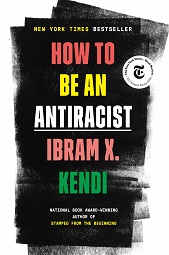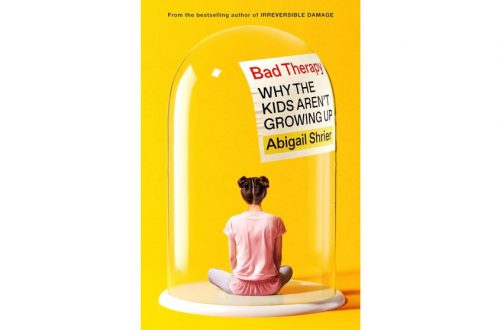Anyone reading this site over the last several years has probably noticed my growing alarm about leftist “social justice” ideologies. I had already become somewhat acquainted with queer theory while doing research for my book on sexual ethics in 2012-2013. A 2016 lecture on intersectionality at an ADF event, however, helped me to see that queer theory was but one strand of a multi-faceted leftist identitarian movement. I had heard of identity politics, but now I was beginning to understand some of its ideological underpinnings. More and more, it appeared to be a kind of religion.
I began writing informally about intersectionality in this space in 2017 and began to see how that theory was a part of a larger “social justice” project that divides all of humanity into identity groups that can be categorized as either “oppressed” or “oppressor.” That eventually led to more reading—including some of Kimberlé Crenshaw’s seminal work on intersectionality (see here and here) and Delgado and Stefancic’s introduction to Critical Race Theory. As I had previously seen with respect to queer theory, I was quickly coming to the conclusion these other leftist “social justice” ideologies contained premises that are incompatible with the Christian gospel.
If I had a growing alarm about these ideologies from 2012-2019, my concern ballooned into a five-alarm fire over the Summer of 2020. I was as concerned as anyone about the killings of George Floyd, Breonna Taylor, and the like, and I expressed as much in this space. But as American cities began to burn (including my own) due to the violence of radicals, it became clear that what we are facing is more than an academic theory. This “theory” has hands and feet, it’s on the street, and it’s spreading at the popular level—including among those in evangelical churches. These ideologies are well into the mainstream, and every follower of Christ will have to reckon with them one way or the other.
Over the summer as racial tensions began to heat up across the country, the entire nation began groping to understand what they were seeing on their television screens. During that time, two books in particular began flying off the shelves. Indeed one of them was unavailable on Amazon for some weeks because they had sold out of them. Those two books are Robin Diangelo’s White Fragility and Ibram X. Kendi’s How To Be an Anti-Racist (One World, 2019). Both of these books are #1 New York Times bestsellers, and it is safe to say that their ideas and teachings have now been introduced into the American mainstream. I wrote briefly about White Fragility last week. This week, I want to add a few words about Kendi’s How To Be an Anti-Racist, which I finished earlier today.
Kendi’s Book
Kendi’s book is not an academic treatise on Critical Race Theory. Rather, it is a popularized application of Critical Race Theory to our current moment. It is a project to transform theory into “social justice.” Kendi is very concerned that social justice not get lost in the ivory tower of theory. In his own career, that involved moving to Washington, D.C. to take up a teaching post at the American University. Kendi wanted to be closer to the action so that he could impact the policy of the nation. And that is the basic exhortation of his book. He wants readers to focus on changing public policy, not on persuading majorities to accept their theories. He believes that if a minority of activists can change policies, then popular opinion will eventually follow. In the meantime, some policies may have to be changed over the will of the majority (p. 230ff).
Kendi argues that one can either be a racist or an anti-racist. There is no in-between position. There is no such thing as being race-neutral. Race-neutrality or “colorblind” approaches are nothing more than thinly veiled racism. Racism is so endemic to the American project that one has to make conscientious daily decisions to oppose racism (and thus be an antiracist) or one will be a racist. The nation is filled with “racial inequity,” which he says occurs “when two or more racial groups are not standing on approximately equal footing” (p. 18).
Kendi defines inequity as inequality of outcome not as inequality of opportunity. That means that any measurable social difference between racial groups must be chalked up to racial inequity. If a greater percentage of whites own homes than blacks, that is racial inequity. If whites have more wealth than blacks, that is racial inequity. Anti-racism is aimed at eliminating racial inequity to produce racial equity. That is why Kendi argues that “racial discrimination is not inherently racist” (p. 19). He elaborates,
The defining question is whether the discrimination is creating equity or inequity. If discrimination is creating equity, then it is antiracist. If discrimination is creating inequity, then it is racist… The only remedy to racist discrimination is antiracist discrimination. The only remedy to past discrimination is present discrimination. The only remedy to present discrimination is future discrimination (p. 19).
In short, Kendi believes that we need racial discrimination in public policy in order to elevate blacks and lower whites into social and economic equity. The distribution of wealth, power, and resources in our society should be based on racial discrimination, not on notions of political liberalism or free markets.
Kendi holds to what is commonly termed “systemic racism,” but he wishes to rename it as “racist policies.” He writes,
A racist policy is any measure that produces or sustains racial inequity between racial groups. An antiracist policy is any measure that produces or sustains racial equity between racial groups… Racist policies have been described by other terms: “institutional racism,” “structural racism, ” and “systemic racism,” for instance. But those are vaguer terms than “racist policy.” When I use them I find myself having to immediately explain what they mean. “Racist policy” is more tangible and exacting, and more likely to be immediately understood by people (p. 18).
Kendi insists that antiracism must be intersectional—meaning that it must not only oppose the oppression faced by racial minorities but also the oppression face by gender and sexual minorities. In other words, antiracism is unequivocally pro-feminism and pro-LGBT rights. Thus antiracism involves a clear rejection of biblical teaching about gender roles. Kendi relays a story about his own activist parents’ wedding, when his mother balked at the suggested wedding vows, “Husbands, love your wives, and wives, obey your husbands” (p. 186).
“I’m not obeying him!” Ma interjected. “What! Pastor Quinby said in shock, turning to look at my father. “What!” Dad said, turning to look at my mother.
“The only man I obeyed was my father, when I was a child,” she nearly shouted, staring into Dad’s wide eyes. “You are not my father and I’m not a child!”
The clock was ticking. Would Dad whip out Bible verses on women’s submission and fight for the sexist idea? Would he crawl away and look for another woman, who would submit?…
Dad should not have been shocked at Ma’s resistance. For some time, Ma had been rethinking Christian sexism. After they wed, Ma attended “consciousness-raising conferences” for Christian women in Queens. What Kimberly Springer calls the “Black feminist movement” had finally burst through the sexist dams of Christian churches. Black feminists rejected the prevailing Black patriarchal idea that the primary activist role of Black women was submitting to their husbands and producing more Black babies for the “Black nation” (186).
Kendi also contends that “Homophobia cannot be separated from racism. They’ve intersected for ages” (p. 193). For this reason, one cannot be truly antiracist while harboring moral opposition to homosexuality or transgenderism. Antiracism requires embracing both. Kendi elaborates:
To be queer antiracist is to understand the privileges of my cisgender, of my masculinity, of my heterosexuality, of their intersections. To be queer antiracist is to serve as an ally to transgender people, to intersex people, to women, to the non-gender-conforming, to homosexuals, to their intersections, meaning listening, learning, and being led by their equalizing ideas, by their equalizing policy campaigns, by their power struggle for equal opportunity. To be queer antiracist is to see that policies protecting Black transgender women are as critically important as policies protecting the political ascendancy of queer White males. To be queer antiracist is to see the new wave of both religious-freedom laws, and voter-ID laws in Republican states as taking away the rights of queer people. To be queer antiracist is to see homophobia, racism, and queer racism—not the queer person, not the queer space—as the problem, as abnormal, as unnatural (pp. 197-98).
Kendi also contends that being an antiracist entails being an anticapitalist. One cannot be an antiracist while supporting capitalist policies. Why? Because the history of capitalism testifies to its moral failure, for it has introduced into the world “warring, classing, slave trading, enslaving, colonizing, depressing wages, and dispossessing land and labor and resources and rights” (p. 181). Thus,
To love capitalism is to end up loving racism. To love racism is to end up loving capitalism. The conjoined twins are two sides of the same destructive body. The idea that capitalism is merely free markets, competition, free trade, supplying and demanding, and private ownership of the means of production operating for a profit is as whimsical and ahistorical as the White-supremacist idea that calling something racist is the primary form of racism… Capitalism is essentially racist; racism is essentially capitalist. They were birthed together from the same unnatural causes, and they shall one day die together from unnatural causes. Or racial capitalism will live into another epoch of theft and rapacious inequity, especially if activists naively fight the conjoined twins independently, as if they are not the same thing (p. 163).
Kendi is very clear that those who fail to oppose capitalism are in fact racists. For capitalism is a policy that leads to racial inequity, and “a racist policy is any measure that produces or sustains racial inequity between racial groups” (p. 18). Capitalism is racism.
Evaluation
So what are we to make of these ideas manifest in Kendi’s How To Be an Antiracist?
Kendi’s renaming of systemic racism with racist policies at least has the virtue of being clear. Systemic racism has always been a vague concept, and racist policy is vastly more illuminating that systemic racism. Nevertheless, Kendi’s definition still has problems. As a category, racist policy suffers from the same deficiencies of systemic racism. Like systemic racism, racist policy focuses on outcomes not on intentions. If, for example, a town in Nebraska has a higher percentage of white people who go to college than black people, that disparate outcome would be a sign of racist policy. A white student matriculating at the local university may actually be “woke,” but he is nevertheless participating and complicit in a racist policy that victimizes black students. The white student may not have a racist bone in his body, but that is irrelevant in this case. He benefits from a racist policy and is thereby tainted.
What is the remedy of such racist policy? According to Kendi, racial discrimination may indeed be the best remedy. A colorblind admissions process would be racist, but discriminating against white students to bring their percentages down would be a valid remedy in Kendi’s framework. It’s not difficult to see how such policies could run roughshod over biblical principles of justice which require “equal weights and measures” (Prov. 20:10) and the absolute unflinching rejection of partiality:
Deut. 1:17 “You shall not show partiality in judgment; you shall hear the small and the great alike. You shall not fear man, for the judgment is God’s. And the case that is too hard for you, you shall bring to me, and I will hear it.”
Prov. 24:23 “To show partiality in judgment is not good.”
Acts 20:34-35 “God is not one to show partiality, but in every nation the man who fears Him and does what is right, is welcome to Him.”
Rom. 2:11 “There is no partiality with God.”
James 2:9 “if you show partiality, you are committing sin and are convicted by the law as transgressors.”
Kendi commends racial discrimination against whites as a means of achieving social justice. And yet there can be no question that racial discrimination is nothing less than racial partiality, which the Bible strictly forbids. It may very well be that certain outcomes are unjust and need remedy, but prescribing racial discrimination cannot be the answer. Such a policy would be a good way to foment racial division rather than healing it.
Kendi insists that antiracism must be intersectional. But intersectionality fails to distinguish between social categories that are morally neutral and those that are morally implicated. For example, race and gender are set right alongside sexual orientation as categories by which one might be oppressed. This is a big problem. Whereas the Bible celebrates racial diversity and the complementary differences between male and female, it does not celebrate sexual orientation diversity. The Bible says that all sexual activity outside the covenant of marriage is sinful, but intersectional activists would view such a judgment as oppression when applied to gay or bisexual people. Intersectionality insists that homosexuality is a good to be celebrated and promoted. Likewise, intersectionality defines gender in a way that mandates the celebration of transgender identities. This too is a radical departure from Christian teaching about how integral biological sex is to human identity as male and female. In these ways, Kendi’s antiracism is at odds with fundamental truths of Christianity. Indeed, to embrace Kendi’s framework is to embrace a fundamental departure from Christianity (1 Cor. 6:9).
Kendi also says that antiracism requires standing against the Bible’s teaching about gender roles withing marriage. Ephesians 5:22, 25 say, “Wives, submit to your own husbands as to the Lord… Husbands, love your wives.” And yet Kendi dismisses these truths as “sexist,” “Christian sexism,” “patriarchal,” and “sexist dams of Christian churches” (p. 186). One cannot be an antiracist on Kendi’s terms and honor what scripture teaches about family structure and authority.
Kendi’s anticapitalism is also problematic. There is much to critique in capitalism. Any system inhabited by sinners will by definition have flaws in it—some small and some enormous. But Kendi’s depiction of capitalism’s sins are way overblown, and his recognition of capitalism’s blessing are not mentioned at all. That is not to say that one must be a capitalist in order to be a Christian. But it is a strong argument that one should be a capitalist if he wishes to be wise. Kendi’s specious claim that “Capitalism is essentially racist” utterly fails to convince.
Conclusion
Hopefully it is clear that antiracism involves a larger set of commitments than many well-meaning Christians realize. Kendi’s antiracism entails an overthrow of traditional family norms, Christian teaching about marriage, the American economic system, and indeed the entire social order. In other words, antiracism implies a revolution. Some have dismissed these concerns by contending that CRT and books like Kendi’s are marginal influences in the nation’s wider discussions about race. I couldn’t disagree more and believe that response to be completely inadequate.
It is important to recognize that the ideology underwriting How To Be an Antiracist is not at all a radical outlier. How To Be an Antiracist is a number one New York Times bestseller. Moreover, the views in Kendi’s book are clearly reflected in the Black Lives Matter protests that have unfolded in our nation over the last several months.1 Indeed, the Black Lives Matter organization has openly stated that they are not only fighting racism but that they are also “committed to disrupting the Western-prescribed nuclear family structure,” that they are “committed to fostering a queer-affirming network… with the intention of freeing ourselves from the tight grip of heteronormative thinking,” and that they are “committed to embracing and making space for trans brothers and sisters.” Indeed the co-founder of BLM has said that she and her co-founder are “trained Marxists.” To say that these ideas are radical outliers with no purchase in the mainstream is to ignore one of the most consequential activist movements in the history of the United States.
No, all Christians (and especially Christian pastors) will have to reckon with the ideas propounded in Kendi’s book. It is an ideology with a growing base in America and even within many congregations. For that reason, pastors in particular have an obligation to recognize and challenge this teaching wherever it occurs. A pastor, after all, “must hold firm to the trustworthy word as taught, so that he may be able to give instruction in sound doctrine and also to rebuke those who contradict it” (Titus 1:9). Kendi’s brand of antiracism contradicts sound doctrine. It falls to us to say so.
—————
1 I believe the proposition “black lives matter” to be profoundly true. It’s an affirmation of the truth that every life has inherent dignity and worth simply by virtue of being created in God’s image. It’s also a way to affirm this truth in the face of historic racial injustices that have denied this truth. So I recognize that the proposition “black lives matter” says something needed and essential. I reject, however, the aims and goals of those who use the phrase to advance the cause of cultural Marxism. I also reject the agenda of the official Black Lives Matter organization, and that organization is what I am criticizing above.






